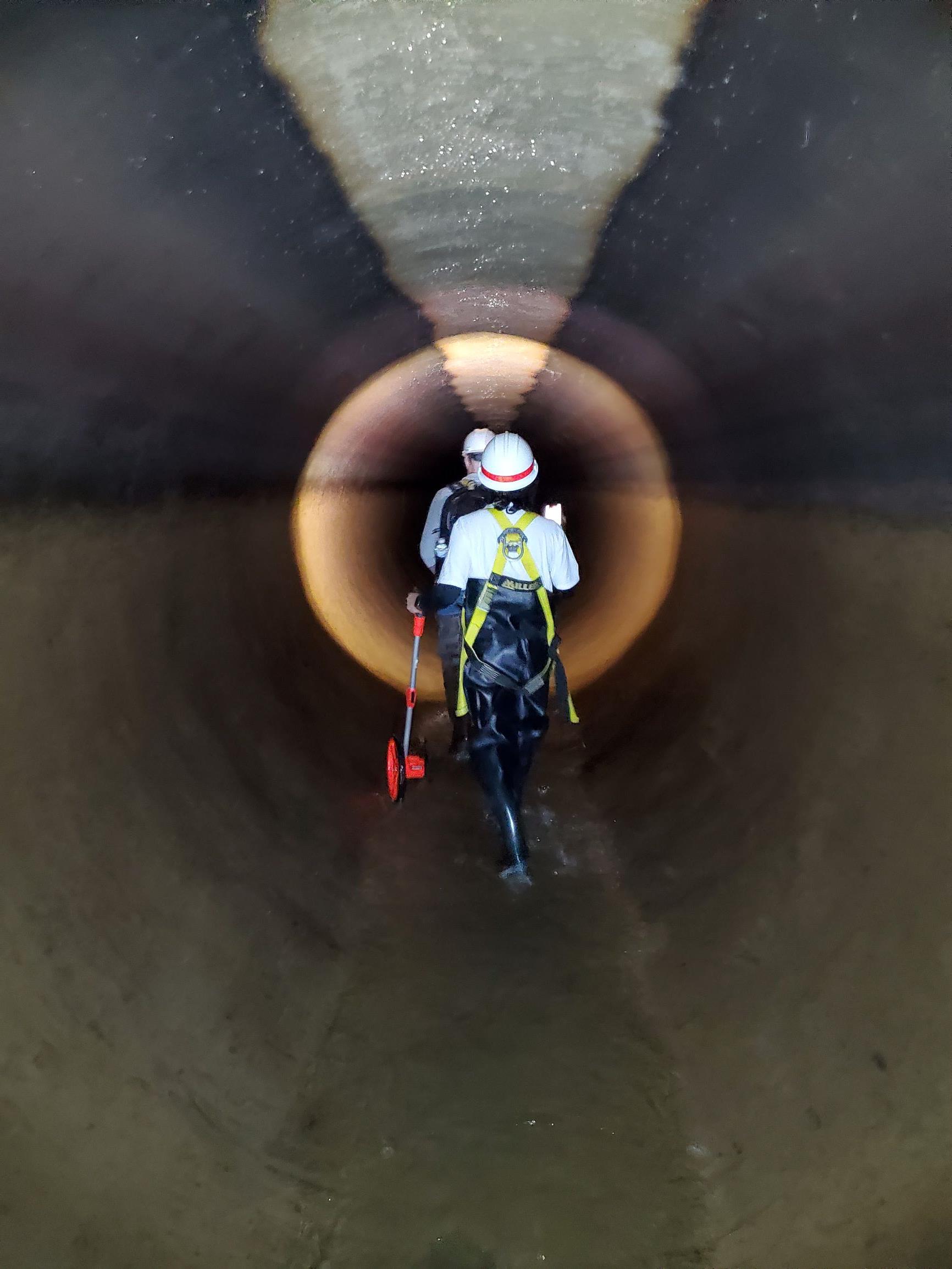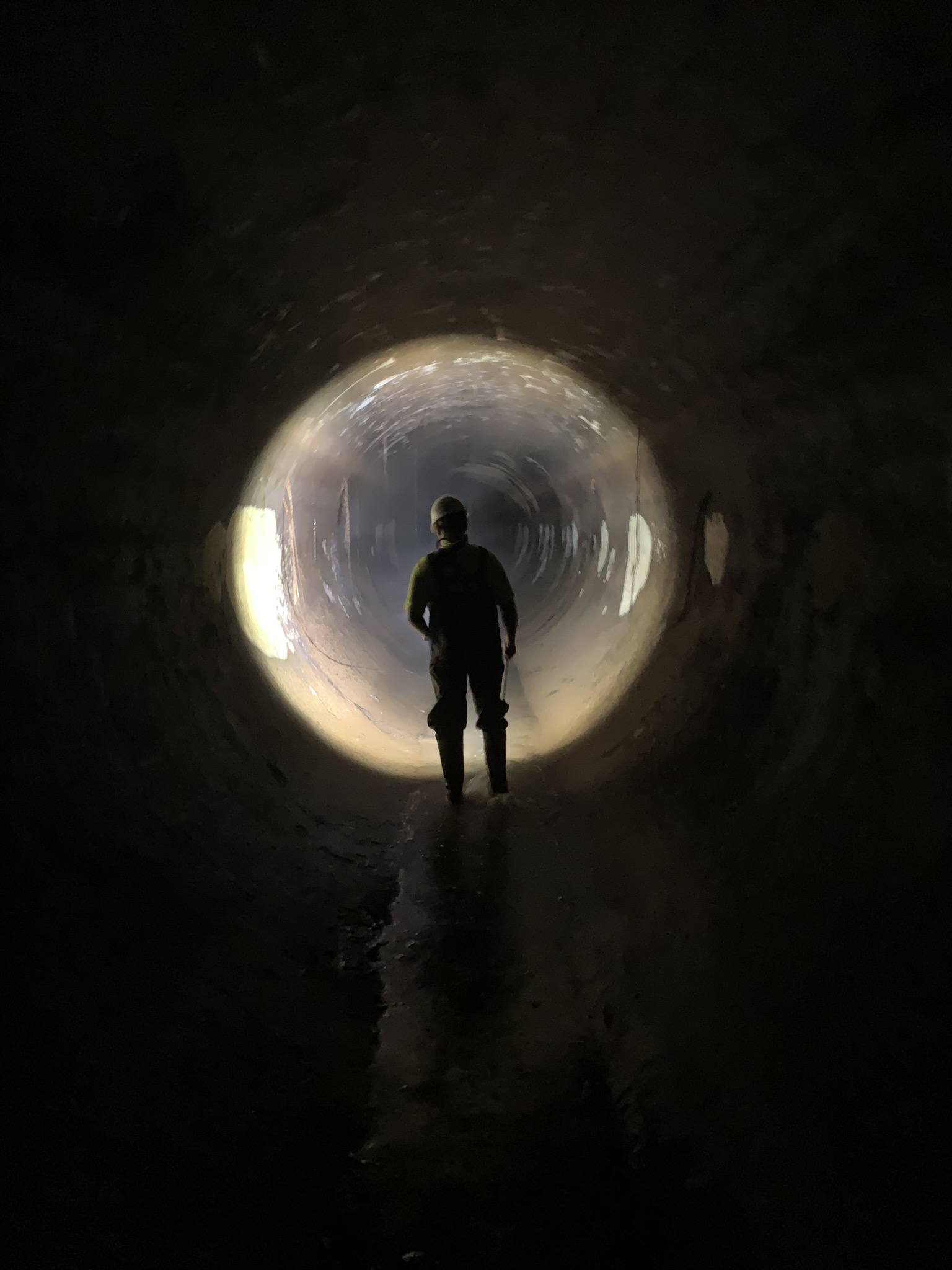Washington Aqueduct crews will be conducting repairs to deteriorated sections of the utility's First Conduit, commonly referred to as the "Old Conduit", located under MacArthur Boulevard in Montgomery County, Maryland, starting late November 2023. Repair work will take place Monday-Friday, 7:00 a.m. to 5:30 p.m., at various locations along the conduit which may result in lane closures along MacArthur Boulevard.
The Old Conduit is a 12-mile-long circular tube structure carrying water from the Potomac River near Great Falls to the Dalecarlia Reservoir, which serves as the primary source of drinking water for approximately 1 million citizens living, working, or visiting in the District of Columbia, Arlington County, Virginia, and other areas in northern Virginia, including portions of Fairfax County.
Aqueduct staff conducted a visual inspection of the Old Conduit in March 2022 and determined that repairs and maintenance work were required to address compromises to the conduit's structural integrity caused by violations of imposed vehicle weight restrictions on MacArthur Boulevard.


Commuters are urged to remain aware of signage throughout work zones along MacArthur Boulevard that can indicate reduced speeds, lane changes, and other important information. Repairs are expected to continue through December 2024.